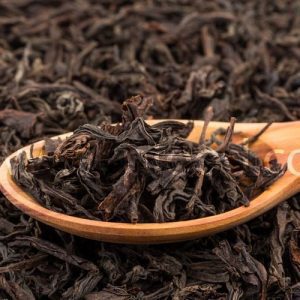Amazing Iris Root and Flower For Sale
ACPFOOD is where you can buy Orris root and flower. Since we purchase high quality products directly from farmers, we provide and sell bulk Iris persica root and flower with the best quality to wholesalers, retailers and manufacturers and you can buy it from us with the best price.
Iris persica root and flower wholesaler, supplier and exporter
To order this product, please contact us.
About Iris
Iris is a perennial plant that reaches sixty centimeters in height and has many species.
The leaves of this plant are relatively thick and very elongated and grow directly from the rhizome of the plant.
From the middle of the leaves of this plant, one or more straight stems grow with a circular cross-section, and a flower grows at the end of each stem. These flowers are large and bluish purple. Each of them has 9 petals: three petals are larger, slightly hanging and tongue-shaped. The other three petals grow almost vertically. The last three petals are the smallest and are located in the middle of the flower. The edge of all the petals of the lily plant is wrinkled. The flowers of some species are yellow, white, blue, purple, or red, and the flower of some species is a combination of several colors.
The fruit of the lily plant is green, slightly elongated, oval and almost pointed, and several deep longitudinal grooves can be seen on its surface. Inside each fruit, there are three longitudinal and parallel reservoirs, in each reservoir, there are seeds in the form of a column. The seeds are pale brown, slightly wide, drop-shaped and have a tip.
Its root is relatively thick, fleshy, and knotty, and the color of its external surface is blackish brown. But it is white inside. Dried and peeled Iris is gray. Fresh Iris has a bad smell. But the dried one has a pleasant aroma, almost like violets. Its taste is spicy.
The best Iris is fragrant, knotty and has medium size. It has a rather pungent taste and makes you sneeze when crushed.
Iris Chemical Constituents
Tannin, starch, Iridin, volatile essential oil, Myristic acid, Oleic acid, Methyl ether.
Iris Temperament
The flower of Iris is hot in the second degree and moderate (not dry, not moist). Its flower oil is hot in the second degree and dry in the first degree. Fresh Iris root is hot at the end of the second degree and dry at the beginning of the second degree. Old Iris root is hotter and drier than its fresh one.
Iris Health Benefits
Iris flower strengthens the brain. Its flower oil is laxative, expelling yellow bile, diuretic, and tonic for body organs. Iris root is warming, sternutatory, reducing moisture, liver tonic, memory tonic, repellent to poisons, diuretic, and weak soporific.
Iris root is useful for chest diseases, cough, phlegmatic diphtheria, phlegmatic pneumonia, paralysis, stroke, convulsions, cirrhosis of the liver, jaundice, headache, hemorrhoids, uterine diseases, cessation of menstruation, and forgetfulness.
Orris root expels phlegm from the chest, removes bad smell from the mouth and nose, and removes brain waste through sneezing. Eating 10 to 20 grams of this root with honey and water causes to expel phlegm and yellow bile thick chymus from the body. Iris root and vinegar boiled drops in the ear are useful for removing tinnitus. A drop of Iris root decoction in the nose or gargle removes the bad smell from the mouth and nose.
An enema with Orris root decoction kills intestinal worms and improves sciatica.
Iris root uterine suppository with honey removes the dead fetus and removes uterine swelling. Its poultice along with vinegar and Damask Rose (Rosa Damascena) oil relieves chronic headaches.
Its poultice is useful for treating diseases of the spleen, splenitis, and coldness of the liver.
Washing the head with Iris root decoction removes head diseases.
In India, the rhizome of Iris persica is used as a medicine to purify the blood and relieve sexual disorders. In addition, this type of Orris is very useful for liver disorders. The fruits of this species are prescribed as a diuretic, hemostatic, reliever of postpartum discomfort, cold, fever reliever, and in cases of rheumatism. In addition, it is used to relieve colic, laryngitis, cessation of nosebleeds, and excessive secretions of white or yellow uterine mucus. Its rhizome is used as a febrifuge. Its flowers are prescribed to treat abscesses.
Iris germanica rhizome is prescribed as a diuretic, laxative and to treat bladder diseases. The extract of the leaves of this kind of Iris is used to treat frozen feet. This rhizome is also used for bronchitis and liver disorders.
According to the experts of traditional medicine in Iran and other regions of the world, a small amount of fresh Iris root has a diuretic and expectorant effect, but a large amount is a strong laxative and emetic and causes stomach cramps and expels a large amount of feces. Eating a proportionate amount of it gives positive results in improving lung diseases, asthma, pertussis, flu, spleen pain, liver pain, uterus pain, and hemorrhoids, and it is emmenagogue. If about 30 grams of Iris oil is consumed alone or as a decoction, it is an appropriate laxative and is useful for uterine diseases and expulsion of the fetus, and to relieve stomach cramps and nerve pain.
Drinking a decoction of 40 to 60 grams of fresh Iris root in 1000 grams of boiling water is useful for relieving paresthesia, tremors, paralysis, asthma, body weakness, difficulty breathing, shortness of breath, and for increasing memory and relieving throat pain. And if it is mixed with water and honey and eaten, it is useful for cirrhosis of the liver, cleaning the bladder from slimy moisture, relieving thirst, relieving sciatica pain, and preventing involuntary and untimely sperm secretion.
Chewing Iris root is beneficial to remove bad breath caused by eating smelly things like garlic and onion.
The poultice of its leaves is useful for burnings caused by hot water and in cases of reptile bites. Iris root powder is useful for removing excess flesh in the eyelids. If its root powder is mixed with vinegar and brewed in a copper dish, it is effective for healing wounds and chronic wounds and growing flesh near bones, either by eating or rubbing. Its brewed enema is useful for sciatica, to remove the bad smell of hemorrhoids, and to remove excess flesh from hemorrhoids.
If Orris root is boiled in olive oil and sprinkled in the ear, it reduces the heaviness of ear. Iris seed is soporific.
Rubbing Iris oil on the head is useful for relieving headache and insomnia caused by moisture. Eating this oil is useful to relieve convulsions and fasciculation. Moreover, if a few drops of it are poured into the nose, it is also useful for curing insomnia in elderly people.
How to prepare Iris root oil:
Grind its rhizome completely, soak it in 8 times its weight of water for 24 hours, then boil it and let it evaporate until it reaches a quarter of its total weight. Then strain it and boil it with 7 times its weight of sesame oil or olive oil until the water evaporates completely and the oil remains. Then cool it and keep it in a porcelain or glass container.
How to prepare Iris powder:
Grind some Iris rhizome, and dry them completely in a hothouse with a temperature of approximately 40 degrees Celsius. Then grind it soft and pass it through a fine sieve. This powder is expectorant and is useful for the expel of chest mucus.
Iris Dosage
Orris flower oil as laxative and diuretic 10 grams. Iris roots up to 5 grams.
Iris Side Effects
Iris is harmful to the lungs. Inhaling fresh Iris causes nausea.
Iris Modifiers
Honey to prevent Iris damage from the lungs. Sour pastes to relieve nausea caused by Iris.













Reviews
There are no reviews yet.